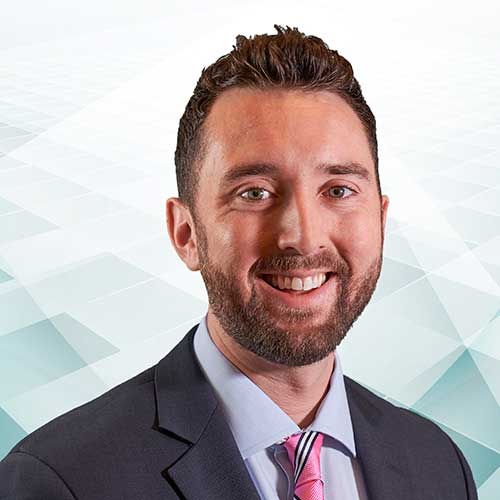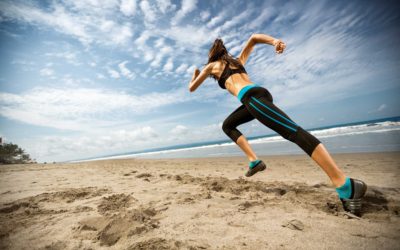With Dr. Dominic Femiano
Dr. Dominic Femiano, a native of the Pacific Northwest, is a primary care sports medicine doctor at Olympia Orthopaedic Associates. He joined us in 2015 after completing his fellowship and offers musculoskeletal care and non-surgical treatment of sports-related injuries. In this interview, he talks about working with local sports teams, growing awareness around concussions, and the prevention of sudden cardiac arrest in young athletes.
Call Us Today! 360.570.3460
Tell us about your background.

I grew up in the Seattle area and did all my undergrad work there too. Then I did medical school in Philadelphia before coming back to the Northwest for my residency in Family Medicine and Primary Care. After that, I finished my training with a fellowship in Sports Medicine at the University of Washington, working with all kinds of athletes and active individuals.
Growing up, I always enjoyed sports. I loved being outdoors and really active. My work really fits with my passion and my lifestyle. I’ve also had multiple sports injuries that have definitely helped me understand what patients are going through and have informed my compassion. I know what it means to be injured and what it means to get back to sports and activities.
What does your work as a Sports Medicine physician involve?
Sometimes people see Sports Medicine and think, “Oh, I’m not that active or I’m not an athlete.” But I am really happy to work with people of any activity level. I have patients who are three-years-old and I have patients in their nineties, and I see everything between. You don’t have to be a high-level athlete to benefit from treatment.
I treat a wide range of musculoskeletal issues with a non-surgical approach. I see everything from acute injuries — like fractures, ankle sprains and wrist sprains — to things like chronic osteoporosis and tendon injuries. I’m happy to see patients who got injured yesterday and those who have had pain for many years. I take different treatment approaches to various conditions, and I recognize that sometimes things will require surgery. I am always happy to connect people with their right surgeon if needed.
Why is an accurate diagnosis important after an injury?
It’s important to zoom in and focus on the fine points of why people are having pain or why they are injured. A more specialized diagnosis helps us to be a lot more accurate and also get patients back to sports and activities in a more timely manner. The more precise we can be in narrowing things down and identifying the issue, the quicker we can come up with a great treatment plan and get people back to doing what they love.
How do you use ultrasound for diagnosis?
Ultrasound can be used at the point-of-care, so I use it in the training room, on the sports field, and at the bedside in the clinic. I use ultrasound to look at different parts of the body, including tendons and joints, which helps me make a more accurate diagnosis. There is no radiation and we can do it right away during a patient’s visit. Patients can also see it in real-time, so they can also see what I’m looking at. And when I do injections or other soft-tissue treatment, I use ultrasound to guide my treatment to make sure that I’m being very accurate and efficient in my approach.
Ultrasound was part of my Sport Medicine fellowship training and I’ve proceeded to take continuing education to perfect my skills. There’s a lot of things I’m able to look at with bedside ultrasound that I wasn’t able to see a couple of years ago. The more you learn about ultrasound, the more you realize the power of it.
How has your work with athletes and sports teams informed the way you practice in a clinic setting?
My work with athletes has kept me in touch with all kinds of active individuals from all walks of life. I’ve worked with elite level athletes with things like the Seattle Storm and the University of Washington in Division I Athletics. I’ve also worked with everyday people through local marathon coverage and taking care of my high school athletes. I learn a lot by working with such a variety of people and trying to get them back into the sports that they love.
I apply a lot of the same principles to the people I see in the clinic. They may not be trying to get back to playing football or return to the WNBA, but I have lots of patients who want to stay active. For me, it’s about trying to understand where my patients are at, what kinds of activities they want to get back to doing, and then getting them back there as quickly as possible. I really value an active lifestyle and I try to treat my patients in the clinic in the same way I work with athletes out in the field.
Tell me about your work with local sports teams.
Most of our Sports Medicine physicians, myself included, have a high school team that we work with. We also spend a lot of time working with the colleges in the area, including St. Martin’s University and Evergreen State College. We are out working with the trainers and the athletes in the training room on a weekly basis. We’re also seeing the athletes in the clinic when they get injured or need further workup. And we are out attending their home games too.
In addition to that, we do annual physicals for a lot of the local high school athletes. We also work in the community to cover big events like marathons, including the Capital City Marathon and triathlons. We are out there to make sure we have safe environments and good medical care for all of the participants.
What do you want athletes and parents to know about concussions?
Concussions are frequent in sports, especially in football and soccer. We rely on our athletic trainers, as well as parents and coaches, to recognize the signs and symptoms of a concussion.
If there is concern of a concussion, then that athlete needs to be pulled out of their sport and be evaluated either by their athletic trainer or coach, or come into the clinic. We usually do a pretty thorough neurologic exam and then consider some specific computerized testing. If we have further concerns, then we work to keep athletes out of sports and activities until they are making an appropriate recovery. We work with a step-wise program to bring them slowly back into sports based on their symptoms. In addition to that, we help to make school-specific recommendations if they need accommodations while they are recovering from a concussion.
In our area, we have good athletic trainers and coaches, so there has been a pretty hard push to educate parents and athletes. It is one of the things we do with our physicals – we educate all of our athletes about the signs and symptoms of concussions to increase awareness.
Can you tell us about your interest in the prevention and treatment of sudden cardiac arrest in young athletes?
At the University of Washington, I trained under Dr. Drezner, who is a Sports Medicine physician and one of the leaders in the field of sudden cardiac arrest in athletes. One of the things that we get concerned about in Sports Medicine is keeping our athletes healthy and preventing any injuries, including sudden cardiac arrest. While that is a rare event, it is definitely something that is preventable through appropriate screening. At OOA, we work with our athletes to make sure that they get accurate physicals and consider further testing if there are any concerning cardiac findings.
What is the best part of working at OOA?
The best part of my job is my patients. I have a great patient population that comes from all the surrounding areas and from all walks of life. I enjoy treating a diverse group of active individuals, whether it’s high-level youth athletes, older marathon trainers, or people trying to stay active with their day-to-day activities. I also love the continuity in seeing patients come back over time, which I find very meaningful.
And I like being in this community and interacting with people at the clinic and also out locally through the events that we cover at the high school, colleges, and elsewhere.
